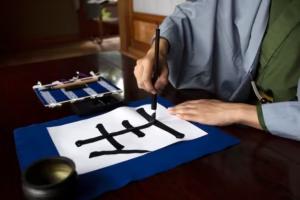
The Korean language, known as Hangeul (한글) in its native script. It is an ancient language with a long history and some very old features contained within, which makes it interesting to study — Korea has historically always been changing from generation. Read this article to find out about the history of Korean, its historical development and how it interacted with other languages.
Historical Origins
The Korean language has origins which have been vehemently debated and researched. Korean is considered by most linguists as a language isolate, despite its many links to the Altaic languages. Nevertheless, it is surrounded by many assumptions concerning its relationships to other languages.
Korean As Language Isolate There is a major theory that Korean belong to language isolate. It is of unknown or unplaceable linguistic lineage. According to one theory, Korean diverged independently from its own internal and external pressures for hundreds of thousands or even a million years.
Origin:
Altaic HypothesisThe Altaic hypothesis suggests that Korean is part of a broader language family, but the accepted view among most historical linguists and reputable contemporary linguistic experts is mainstream consensus. But this theory is somewhat controversial for a lack of evidence to support it.
Koreanic and Japanese Connections: Some have claimed because of the grammatical similarities between Koreanic and Japanese that these languages may be related on some historical level. Most of these similarities, however, are believed to be the result of parallel evolution rather than common descent.
Early Written Records
Oenullulr, when hang-yeolana was introduced under King Sejong the Great’s reign in 1443 and marks Korean as being with written records since the MiddleKoreanFollowed by Write mungib between century 석기. Korean used to be written in Classical Chinese characters (Hanja) before Hangeul was created, and Hanja are difficult letters that ordinary people could not understand. Hangeul was created as an intuitive and phonetic script in order to increase literacy among Koreans.
Historical Development
The language of Korea has undergone a number of changes over the centuries. It can be categorized into a few steps of development:
Middle Korean,
Middle Korean (10th — 16th Century): Also known as Old Korean, this period of history saw the use of Classical Chinese characters in early written forms. It also had a pronunciation and grammar that was quite different from modern Korean. Hangeul Script was subsequently created in order to clarify and democratize writing
Late Middle Korean
Late Middle Korean (17th – 19th Century): In the Early Modern era, over time, Classical Chinese influence came to decline in favor of a caevo-Korean form that later competed with Japanese ethnically. The spread of using Hangeul increased where Korean literature, and documents started to be solely written in this the letter form without any mixed ruling.
Modern Korean
Modern Korean (20th and 21st C.): The Koryo dynasty was followed by the Yi, who established a unique culture which in time generated a novel form of writing from well practiced Chinese characters into an alphabet able to seamlessly convey their spoken tongue between both its dialects, frequently pronounced drastically different for speakers on nearly opposite ends of the peninsula.Coming at any rate about towards midscentury. The Korean War and subsequent split of Korea on the half also represented a dialectal difference between North Korean Hangeul as well as South Korean stereotypes,iring all turned to use in South Koreaa.
External Interactions
The Korean language, however, was not in a geographically and politically strategic area that would be able to protect it from outside influence.
Another Country
Chinese Occupation
: China has had an influence on Korea for thousands of years, shaping its culture and language. Many Korean words, particularly for strong cultural nouns (some culture-related vocabulary about government or some system in education) come from Classical Chinese. This is exemplified by the presence of Hanja (Chinese characters) in Korean script.
Japanese Occupation
: Japanese language and culture made a huge impact on the Korean peninsula as well during their 35 year occupation. One Korean Word for Penis from Each Decade (Same as in Japanese ) Some words came be transferred into a language, unlike Japan example Korea, many of these had common origin points with transcription decrees. Occupation spurred efforts to repress the Korean language, but resistance helped promote national identity by means of rhythmic preservation.
Globalization Global
: In recent years, South Korea became huge economic and cultural power with significant influence; so the Korean language has become more popular worldwide. K-dramas and K-pop have been responsible for a wave of interest in Korean pop culture, which eventually led to the global spread and influence of the language.
FQs Question
- How do you say Korean in the korean language
Korean — Hangugeo (한국어) or Chosŏnŏ (조선어)
- How many people speak Korean?
The speaker of this language could be called a Korean, several million which are spoken throughout the world in South and North Korea.
- What is Hangeul?
The Hangeul is the Korean alphabet that was created by Korea in 15th century. Designed for use and ease of learning, known for simplicity.
- In what ways is Korean grammar different from English or Western languages?
Korean grammar is a totally different world compared to English. Korean is an agglutinative language, which means it assembles suffixes and particles to indicate grammatical relationships. The normal word order is Subject-Object-Verb rather than the English standard of Subject -Verb Object.
- So, are these dialects of Korean?
Various dialects of Korean are spoken in both Koreas (including between the North and South), Regionally, South Korea also has the Gyeongsang dialect and Jeolla dialect.
- In what sense the Korean language is relevant in relation to Korean culture?
Korean is synonymous with being Korean. It represents as something to be proud of and (as it should) is considered a part of the cultural policy such that its preservation, promotion etc.
Conclusion
From the ancient roots of Korean up to its modern day incarnation, it is a demonstration that as speakers of this language change and adapt… so does the language. Korean is a language that, despite centuries of external influences and internal growth has kept its uniqueness during interactions with other cultures. The history of Korean and how it has evolved over time, however does not only allow us to see its linguistic features but also gives a glimpse into the rich cultural fabric that the […]




Average Rating